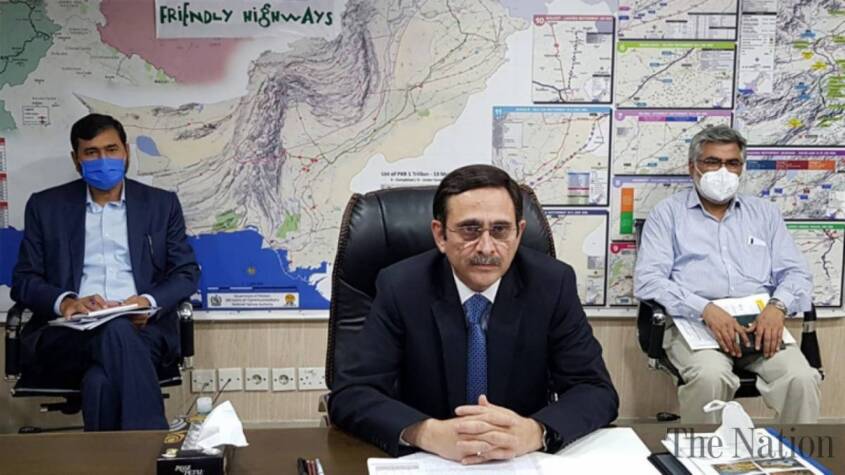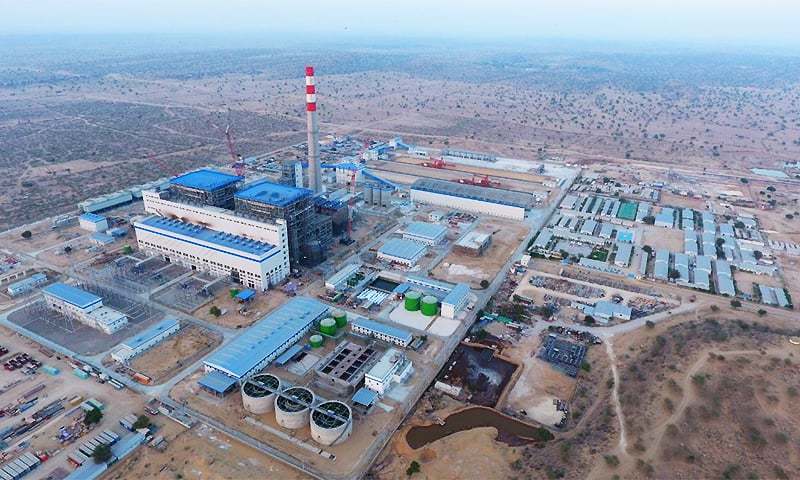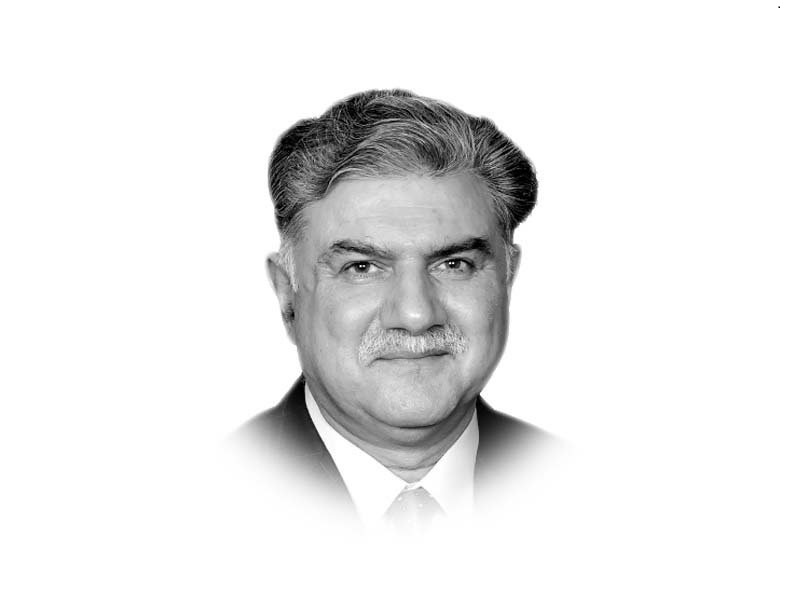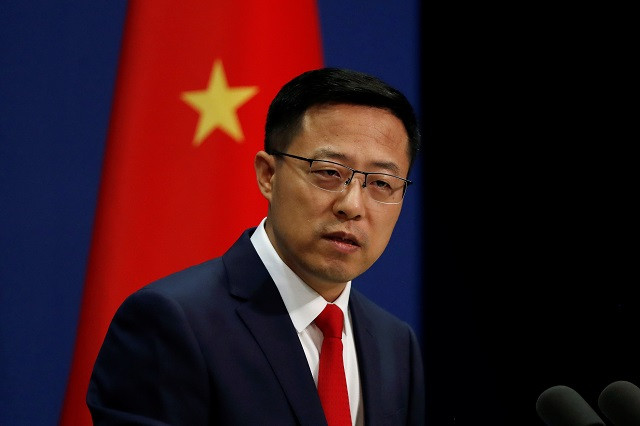CPEC: understanding the behemoth — facts and myth
Once fully operationalised, BRI would provide a viable alternative to the present predatory economic system
Inam Ul Haque May 20, 2021
The writer is a retired major general and has an interest in International Relations and Political Sociology. He can be reached at
tayyarinam@hotmail.com and tweets @20_Inam
A lot has been said about the One-Belt One-Road initiative (OBOR), or as the Chinese call it the Belt and Road Initiative (BRI). It attracts unwanted attention, as no superpower in human history has been able to undertake a project so enormous, that it covers most continents and two-thirds of the world, is inclusive of all major areas of modern economy, and is undertaken by a non-white, non-European power — the Peoples’ Republic of China (PRC).
With BRI, an ambitious signature foreign policy initiative by President Xi Jinping announced in 2013, China expects regional and global connectivity with and among some 126 countries and 29 international organisations (already on board), through a network of roads, highways, railways, pipelines, power plants, grids, fiber-optic and social welfare and poverty-alleviation projects.
The overall investment is a staggering over $1.3 trillion to establish six international corridors. The Initiative would ultimately cover over 65 countries, 60% of the world-population and 40% of the global GDP. The trade volume among China and the participating countries is already over $6 trillion, with the potential of adding $117 billion this year. Infrastructure improvement is likely to reduce the global trade costs and transportation time by an average of 2.2% and 2.5%, respectively.
Once fully operationalised, BRI would provide a viable alternative to the present predatory economic system. Therefore, BRI especially the China-Pakistan Economic Corridor (CPEC) — as its pilot programme — is subjected to intense criticism by the United States/West. This series of articles would dispassionately analyse the diverse aspects of the CPEC.
The MoU for the Long-Term Plan (LTP) under CPEC was signed in Islamabad by the then federal minister, planning development and reform, Professor Ahsan Iqbal (PML-N) and Mr Wang Xiaotao, vice chairman of China’s National Development and Reform Commission (NDRC), on November 21, 2017, although CPEC deliberations were underway since 2013-14.
As per official definition, CPEC is a “growth axis and a development belt” featuring a comprehensive transportation corridor and industrial cooperation. China-Pakistan is the ‘growth axis’, containing major collaborative projects of infrastructure construction, industrial development, economic and trade cooperation, social uplift and socio-economic development including people-to-people exchanges and cultural communications.
CPEC officially covers the Xinjiang Uygur Autonomous Region in western China, and the whole territory of Pakistan in a format comprising a ‘core zone’ and ‘radiation zone’. The corridor passes through key node cities including Kashghar (Kashi in Chinese), Atushi, Tumshuq, Shule, Shufu, Akto, Tashkurgan Tajik in China; and Gilgit, Peshawar, DI Khan, Islamabad, Lahore, Multan, Quetta, Sukkur, Hyderabad, Karachi and Gwadar in Pakistan. Development of western China is pursuant to China’s longstanding policy, “Go West”, aimed at removing developmental disparities between coastal China in the east, and the under-developed mountainous China in the west.
Both China and Pakistan have agreed to the “1+4 cooperation mode” for CPEC with the corridor as the core, and Gwadar, energy, transport infrastructure and industrial cooperation as its four priorities. CPEC follows the ‘National Plans’ of both countries as per their respective Vision 2025. For China, CPEC is a POC (proof of concept) for BRI.
In its spatial layout, CPEC further devolves into “one belt, three axes and several passages”. The “one belt” contains the core zone composed of Kashgar, Tumshuq city, and Atushi city and Akto county in Kizilsu Kirghiz autonomous prefecture of Xinjiang, China and Islamabad, parts of Punjab, Sindh, K-P, Balochistan, AJK and Gilgit-Baltistan (G-B). Its “three axes” horizontally run connecting Lahore and Peshawar, Sukkur and Quetta, and Karachi and Gwadar. The “several passages” refer to railways and highways connecting Islamabad to Karachi and Gwadar.
The five ‘key functional zones’ of CPEC, from north to south include the Xinjiang foreign economic zone; the northern border trade logistics and business corridor and ecological reserve; the eastern and central plain economic zone; the western logistics corridor and business zone; and the southern coastal logistics business zone.
CPEC is intended to greatly speed up “industrialisation and urbanization”, making Pakistan globally competitive and domestically prosperous. LTP matches up locational advantage of Pakistan with China’s economic and industrial potential.
LTP identifies some impediments to CPEC such as; global power adjustment to a rising China; weak industrial base/economy of southern Xinjiang; hard geography of Sino-Pakistan border areas (escalating costs); and demographic and economic disparities in Pakistan. The Indus River valley, though relatively developed, has “high population density and limited resource-carrying capacity”; whereas, western Pakistan is poorly developed and has harsh natural conditions. The corona pandemic is also another unforeseen impediment.
China’s vision, as alluded to, is to “further advance its western development strategy”. And to promote economic and social development, accelerating BRI construction, utilising China’s advantages in capital, technology, production capacity and engineering operations. China aims at the formation of a “new open economic system”.
From Pakistan’s standpoint, CPEC is to fully “harness the demographic and natural endowment of the country”, enhancing its industrial capacity through new industrial clusters in order to balance the “regional socio-economic development, enhancing people’s wellbeing, and promote domestic peace and stability”.
CPEC also has an international/regional vision, entailing the creation of a new “international logistics network and industrial layout, based on major transportation infrastructure”. It aims at elevating the “status of South Asian and Central Asian countries” through economic integration, trade growth, technological/economic cooperation and people-to-people exchanges. This vision welcomes inclusion of all left out countries like India in the CPEC.
In its initial formulation, CPEC’s declared timeline runs until 2030 with phasing of projects in short, medium and long-term with scope for later adjustments. In the short-term (2014-2020), CPEC was aimed at resource mobilisation, removing major bottlenecks to Pakistan’s economic (not identified in the MoU), social development and boosting economic growth in both countries.
In the mid-term (upto 2025), CPEC envisages completion of major construction and associated industrial systems, optimal utilisation of expected economic functions (improving peoples’ livelihood along CPEC) and removing economic/developmental disparities regionally, as per Vision 2025. In the long-term (upto 2030), CPEC’s goal is for South Asia growing into an international economic zone with global influence, having CPEC effectively integrated for economic growth in South/Central Asia.
Subsequent implementation and recalibration have sequenced projects into ‘Early Harvest’ projects (2015-2019) in the energy sector, adding up approximately 7,000 MW to the national grid by 2019, easing energy shortages and load shedding. By 2022, energy projects would add another 13,180 MW, lifting production and exports.
Similarly, short-term (upto 2022), projects include mainly infrastructure (roads), Gwadar development, fiber-optic network, hydel, coal-mining and power projects. Whereas, medium-term (upto 2025) include railways and the creation of industrial zones. The long-term projects (upto 2030) include completion of industrial zones, agriculture and tourism.
If one looks at the above agreed phasing, it is heartening to know that concurrent projects undertaken are generally ahead of timelines and phasing, despite the corona-induced complexities.
Next, we shall discuss the remaining aspects of CPEC, including the ill-founded and maleficent criticisms, to which this very vital project is subjected
Published in The Express Tribune, May 20th, 2021.







